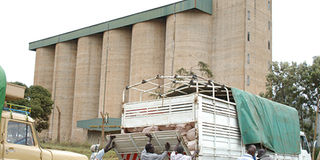Post-harvest handling of grain key to food security

PHOTO | FILE
Lorries loaded with maize queue to deliver produce to a National Cereals and Produce Board depot.
Kenya could almost double her maize production from the current 28 million bags, if post-harvest handling and consolidation of the produce were improved, Eastern Africa Grain Council (EAGC) chairman Judah Bett, has said.
Weevils, rodents and poor drying methods leading to fungal attacks cost the country 46-50 per cent of its harvest and tackling these problems could see the country surpass the 36 million bags it requires for domestic consumption, to enjoy a surplus for export.
He was speaking in Mosoriot Nandi North District while donating warehouse receipt system kits to farmers. Mr Bett pointed out that EAGC, the regional grain trade body, included millers who were willing to pay higher prices for grain, as long as quality and volumes were high.
“Food security goes beyond development and release of high-yielding and early maturing seeds, as most of the harvest is lost before getting to the market,” he said, adding that uptake of grain grading and quality standards must be embraced to reduce trading cost and inefficiencies between production and the market.
In line with this, EAGC launched the first grain institute of its kind in the region last week, known as the East African Grain Institute.
The institute will train, mentor and provide technical knowledge and capacity building to stakeholders in the grain value chain, to improve efficiency and reduce transaction costs.
Some of the course to be offered include grain post harvest handling techniques, grain warehousing and storage management, as well as structured trading systems.
Experts say the development, including that of the warehouse receipting system, is likely to boost farming in the country to the level of Kenya becoming a net food exporter.
Mr Gerald Masila, EAGC executive director, said the development will enhance overall food production through reduction of post-harvest loses.




